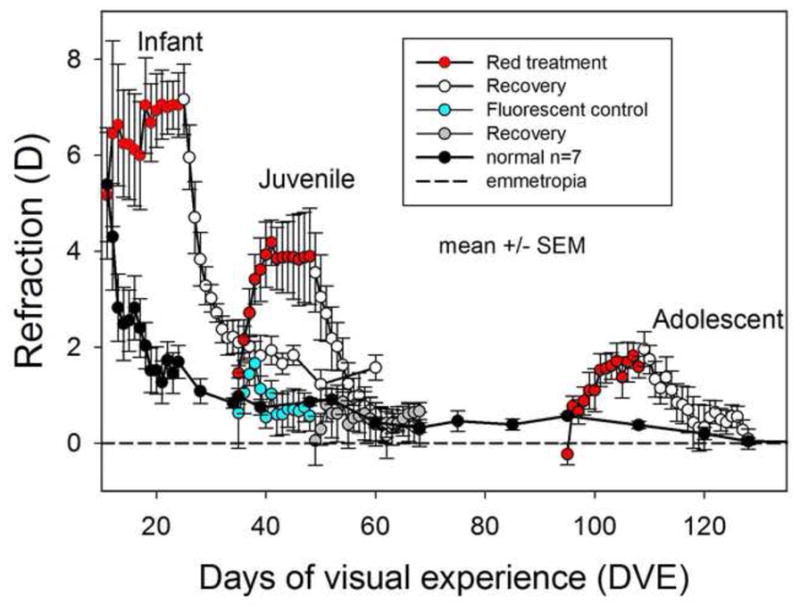Fig. 2.

The effects of red light on refractive state (hyperopic refraction is positive) at different ages as a function of days of visual experience (DVE, horizontal axis). Error bars are mean ± standard error of the mean (SEM). The data for the infant group are from Gawne et al. (2017). The normal animals (black circles) show an initial hyperopia followed by a rapid decline and then a slower convergence towards emmetropia (dashed line). The animals exposed to the red light, however, developed a significant hyperopia (ANOVA, P<0.05) at all three age groups (red circles). Fluorescent control animals exposed to 975 lux (blue circles) did not become hyperopic. Upon return to standard colony lighting (open white circles), these animals all recovered back towards emmetropia.
